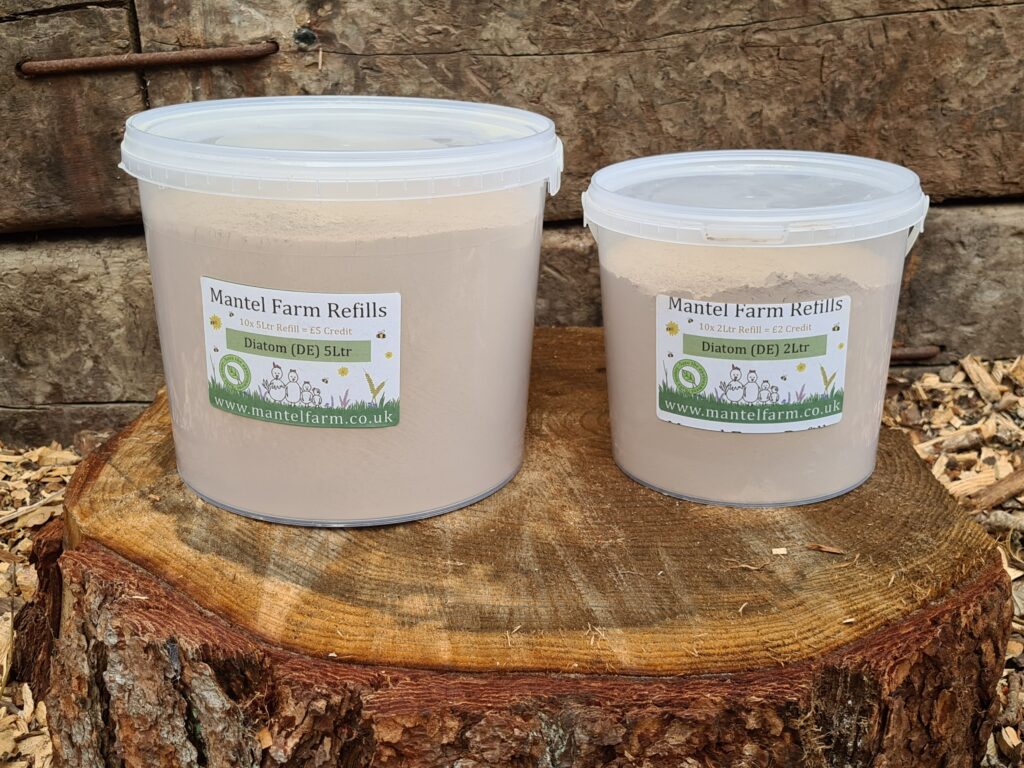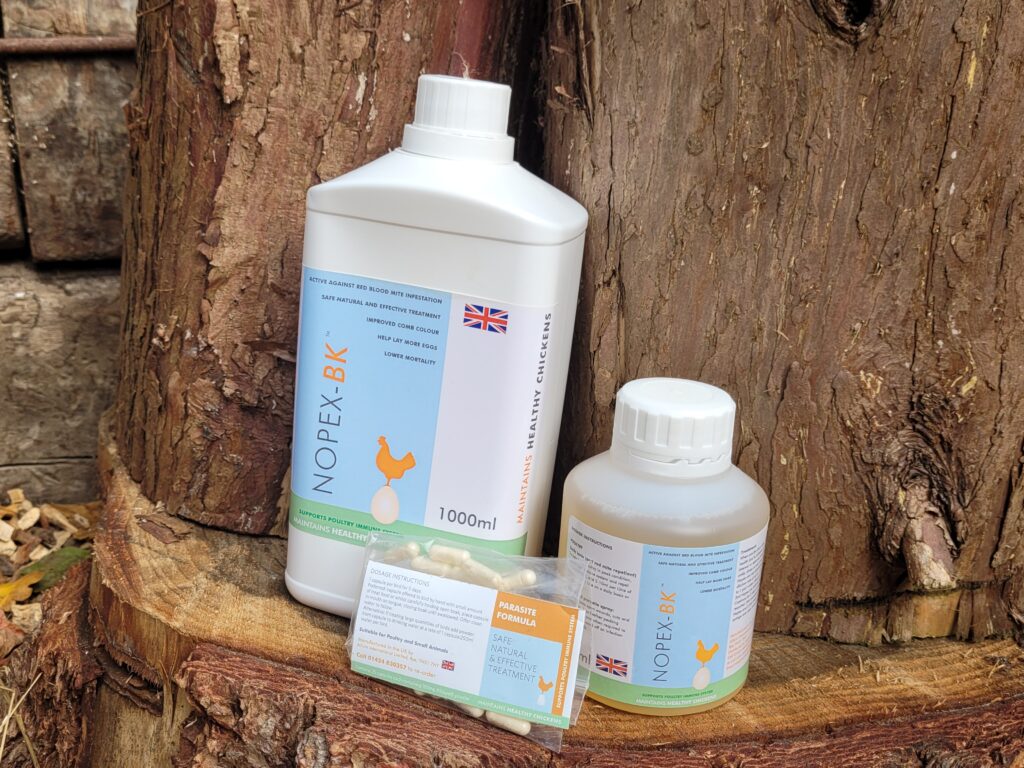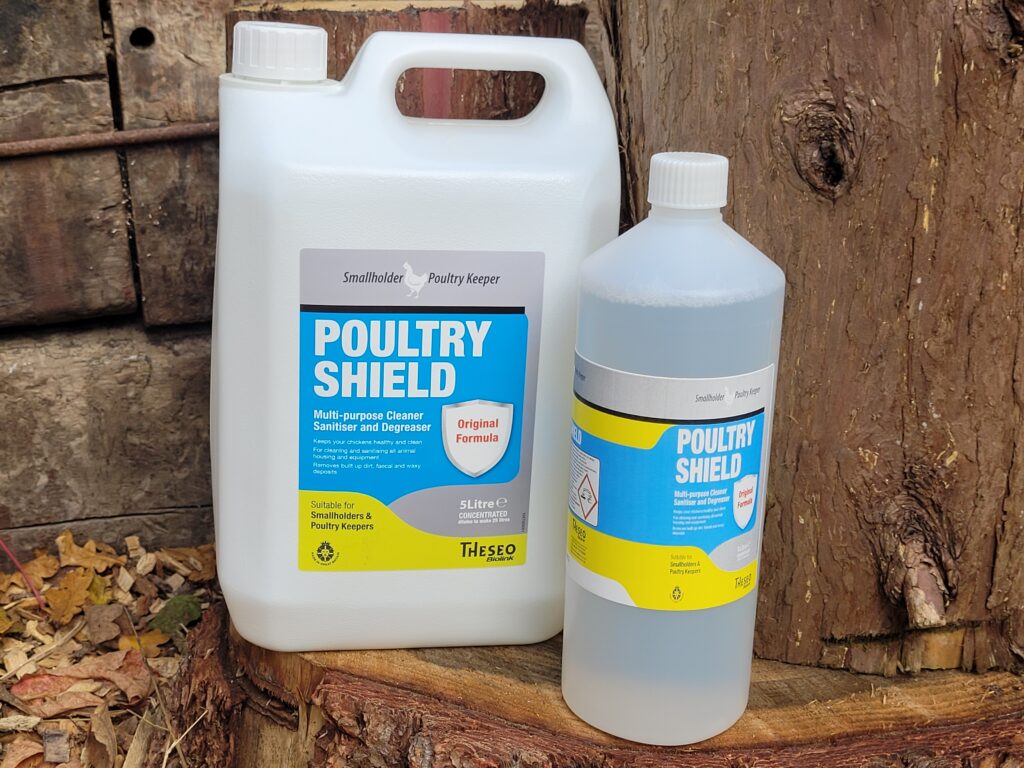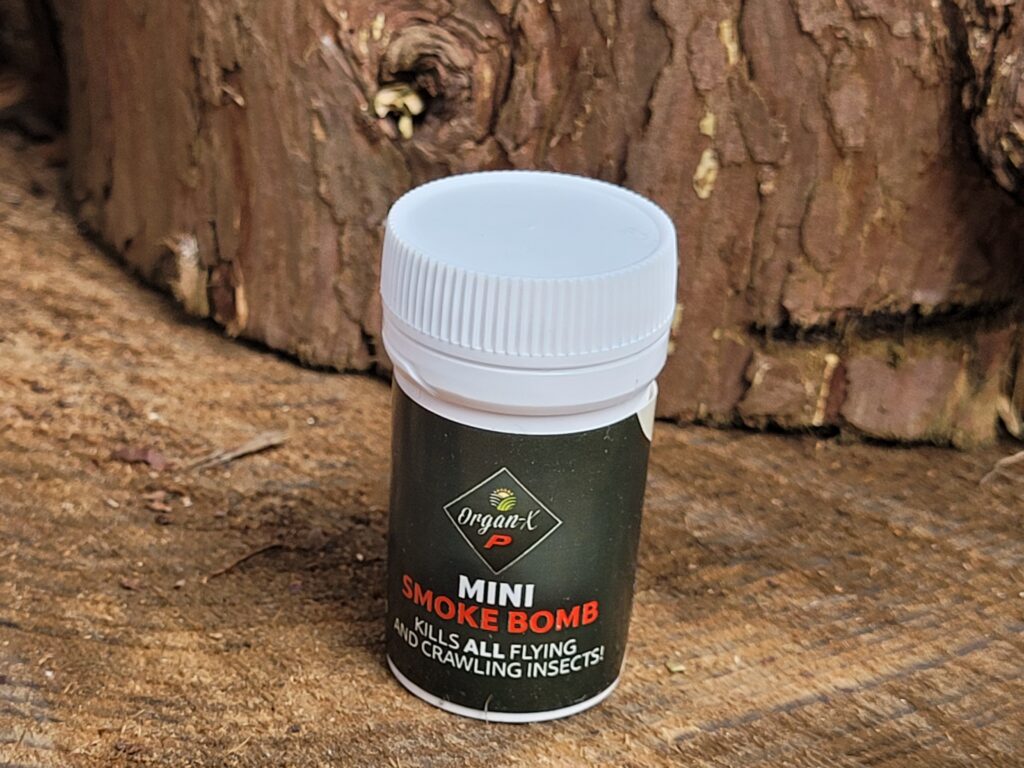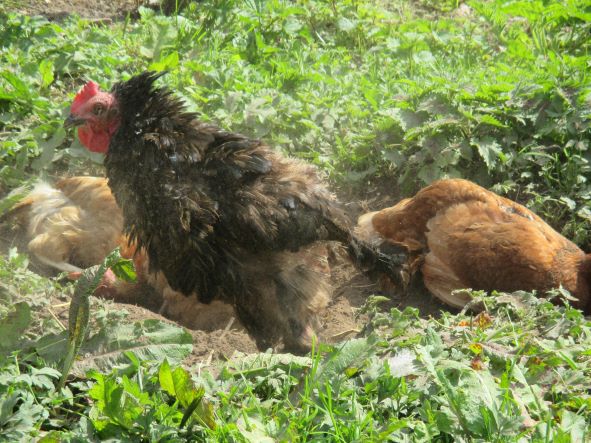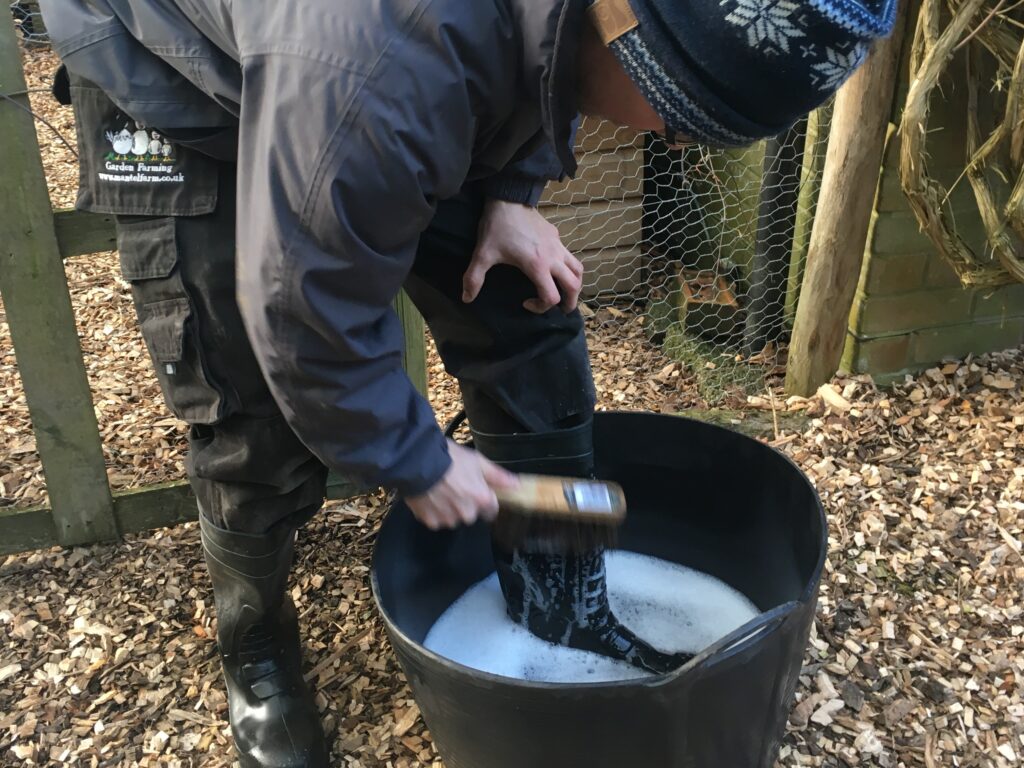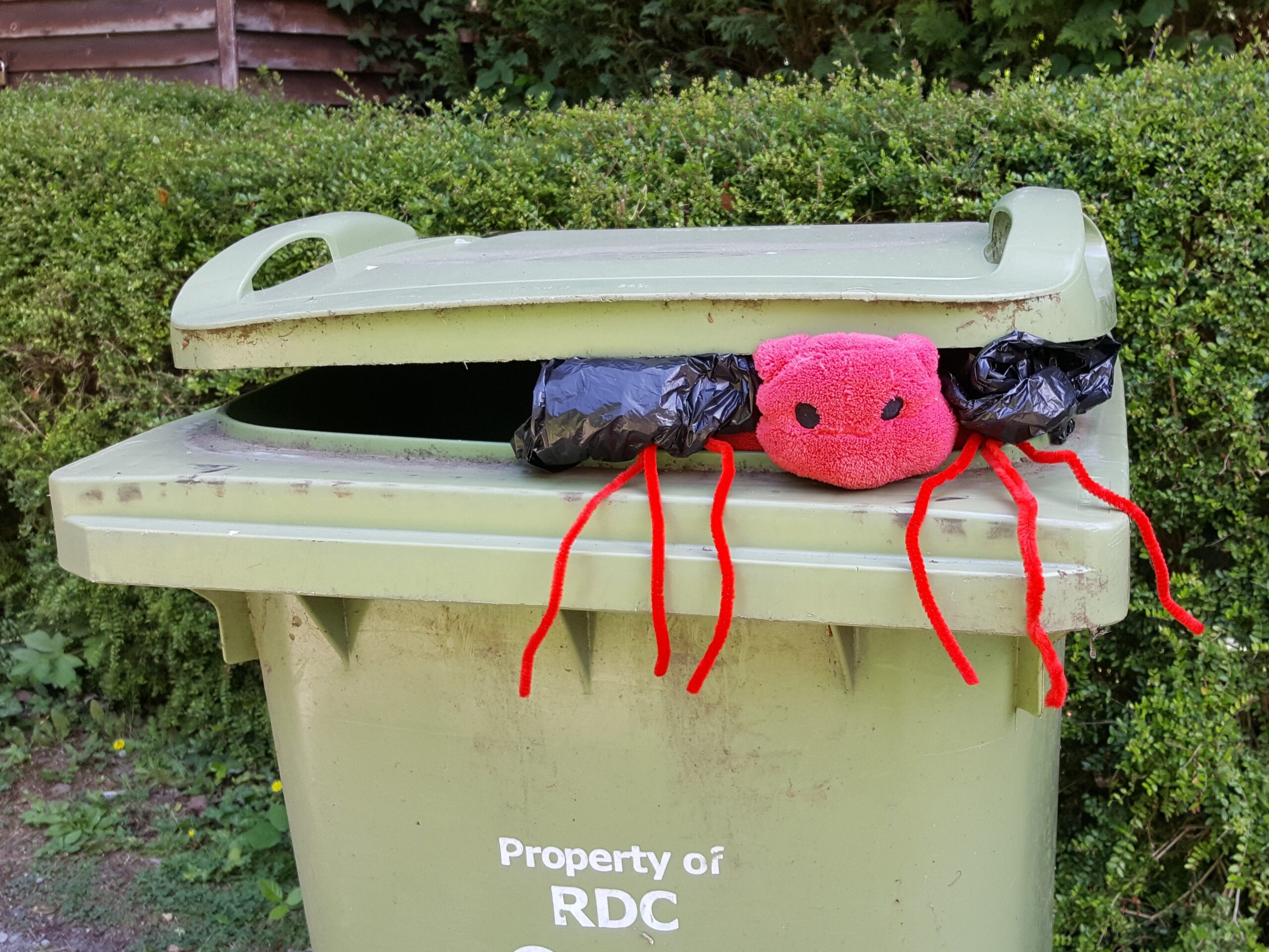
Prevention and Treatment
Once Red-mite have arrived in your poultry house it can be an incredibly difficult problem to solve 100%, although it is possible, we always recommend preventative action is taken to avoid a ‘mite-mare’.
Quick Check List:
- Check regularly for signs of red mite, are your birds looking spritely and alert, not lethargic or anaemic?
- Look for red mite poo! – ash like ‘salt n’ pepper’ markings around the cracks and crevices
- Has egg production slowed down or stopped for no other obvious reason?
- Do your birds seem reluctant to go into the coup at night (being shut in with loads of biting critters is no one’s idea of fun!)
- Inspect the coup at night with a torch, if there are red mites, you will see them on the perch and walls, as well as on your birds (though don’t stick your head in too far!)
- Through April to September clean out, spray and powder once a week
- Through September to April, although mite are generally less active, it is still worth spraying every 2-3 weeks, with powder sprinkled around in between.
- Dispose of cleaned out material in such a way that no red mite can return to the coup.
- Consider use of a poultry tonic or herbal supplement to repel the mites & maybe a vitamin supplement to aid recovery from an infestation.
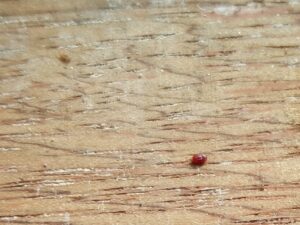
Red Mite Help and Advice:
Firstly, what is a red spider mite? Not to be confused with the red ‘aphid’ spider mite (lives on plants, feeds on sap & basically safe), our mite is a blood consuming external parasite, similar in principal to a ‘tick’, however, not living on its host, but attaching for just 1-2 hours, usually during the night. It then returns to the cracks and crevices of the poultry house to digest the blood meal, ready to repeat the process the following night. They do of course take the time to breed (rather a lot!), and poo! As it happens, red mite poo is nothing to be sniggering about, it is in fact, one of the only clear indicators that you actually have red mite in your poultry house. The birth to breeding cycle of red spider mite is around 7-10 days, though can be much less in most favourable conditions. Their eggs are laid within those perfect ‘nooks and crannies’ inside the coup, out of our sight, hatching within 2-3 days, and able to take their first blood meal within 24 hours of hatching.
If you were to drop a biro point down onto a piece of paper, the dot produced would be the size of an average red spider mite. They begin life quite a bit smaller, just like a speck of dust, pale greyish green to olive in colour, only obtaining their namesake colour red once they have consumed there first blood meal, then, with the blood shining through their thin skin, become more visible to our eyes. More mature adults (7days+), after subsequent blood meals can turn darker red though to black.
How do you know if you have red mite in their poultry coup?
Finding out the hard way: is generally during egg collection or cleaning out, when you suddenly have loads of crawly itchy things running up your arms, or if you are seriously unlucky, having stuck your head inside the coup and they have showered down into your hair!
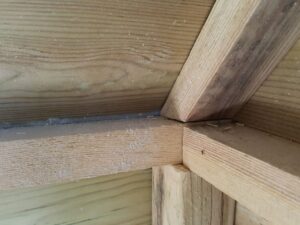
So, how do you look for signs?
Look for red mite poo! It appears as ash / dust like markings around the edges of the cracks and crevices, often referred to as ‘salt n’ pepper’ makings, the only real daytime indicator that mite are present.
Birds Health: Another indicator is the state of your birds health, though realising that your birds are looking lethargic and pale faced – anaemic, can often be too late, at this stage the birds are often on the brink of death, having had the life literally sucked out of them!
Changes in the flocks behaviour: If the birds seem reluctant to go into their coup at night, trying to roost up outside, have a thought before you force them in – there mite be a reason why! you could be shutting them in for yet another night of torture!
Where do they come from?
How do Red Mite arrive in the poultry house, or, what brings them in? There are lots of possibilities, some say ‘wild birds’, some say ‘chicken to chicken’, some say on second hand housing and equipment, and some say lots of other stuff! No one can be totally sure, but undoubtedly, they could even be carried on the wind.
Dealing with Red Mite:
The red mites rate of reproduction combined with its ability to survive our efforts to eradicate them, make for a proper battle, so, how can you do to avoid a red mite problem?
Prevention is always better than cure: treating the hen houses regularly, thereby undertaking a regular course of preventative action……just in case!
When and how often to treat: Red mites are generally more active during the warmer months: though with our climate ever changing it becomes harder to say in which months to concentrate the anti-red mite measures. Starting no later than April, I would recommend after each clean out (generally once a week), a thorough preventative treatment.
Stage 1 Spraying with an anti-red mite proprietary liquid: Our recommended product is Poultry Shield: we’ve used it for many years and trust it to do the job. It doesn’t contain poisons and can even be used in organic production systems. It is bio-degradable and has a low odour. It is important to concentrate efforts on perching rails (especially support sockets), nesting boxes and all corners (not forgetting the rest of the indoor accommodation!) It is essential that you use enough liquid to penetrate all the cracks and crevices, if it’s not dripping out the bottom, then you haven’t used enough!
Beware of Jet washing: Please take note, if you like to use a jet wash to wash out your poultry house, often employed by people to ‘blast the little blighters out’, then that’s fine, BUT, not before thoroughly applying the Poultry Shield (or other) and allowing to soak for an hour or so. If one jet washes first, then most of the red mite are just washed out of the poultry house and the majority climb back aboard later once ‘the dust has settled!’
Stage 2 Powder: Once the coup is touch dry (or as dry as practicably possible) from the application of Poultry Shield, I would recommend a good application of a proprietary anti-red mite powder.
Our recommended anti-red mite powder is ‘Diatomaceous Earth’ (Diatom or DE for short).. The powder works by dehydrating the red mite. By applying the powder liberally around the inside of your birds housing, nesting boxes & perches, it will be possible to tackle red mite, fleas and lice all at the same time, ideal!
Disposing of old bedding: Paramount, is ensuring proper disposal of the cleaned-out material – particularly when you know for definite that red mite are present in the poultry house. Just throwing it on your compost heap or chucking it into your brown wheelie bin, is often not the right answer. If the compost is too near to your birds, the mite will just migrate straight back! Also that wheelie bin lid really does not fit tight enough to keep those tiny mites in! Even inside a black bin liner with the top tied up is no barrier to a very small red mite following the scent of a chicken! You really do need to make sure bags are sealed, composts are a proper good distance away (or dig a hole in the compost and bury the material some way down). My favoured alternatives are either bonfire (though I’m aware this is not possible in many areas), or removal from the property.
Garlic tonic: Mythical history tells us that vampires are warded off by garlic, indeed regular inclusion of a garlic supplement such as ‘NopexBK’ tonic in the birds drinking water, during times of red mite infestation has been proven to help them repel these little ‘mini-vampires’, as they can detect the garlic in the blood stream and are not too keen! We often use NopexBK in our water here at Mantel Farm as it has proven health benefits and should the odd stray red mite waltz in, it’d hopefully be waltzed back out even quicker!
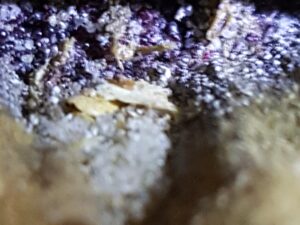
So, remember, ‘prevention’ is always better than ‘cure’, and in this case, the ‘cure’ is most likely not going to be a 100% solution. Therefore, our advice is always to manage your poultry as if you already have Redmite, never think ‘it won’t happen to me’!



